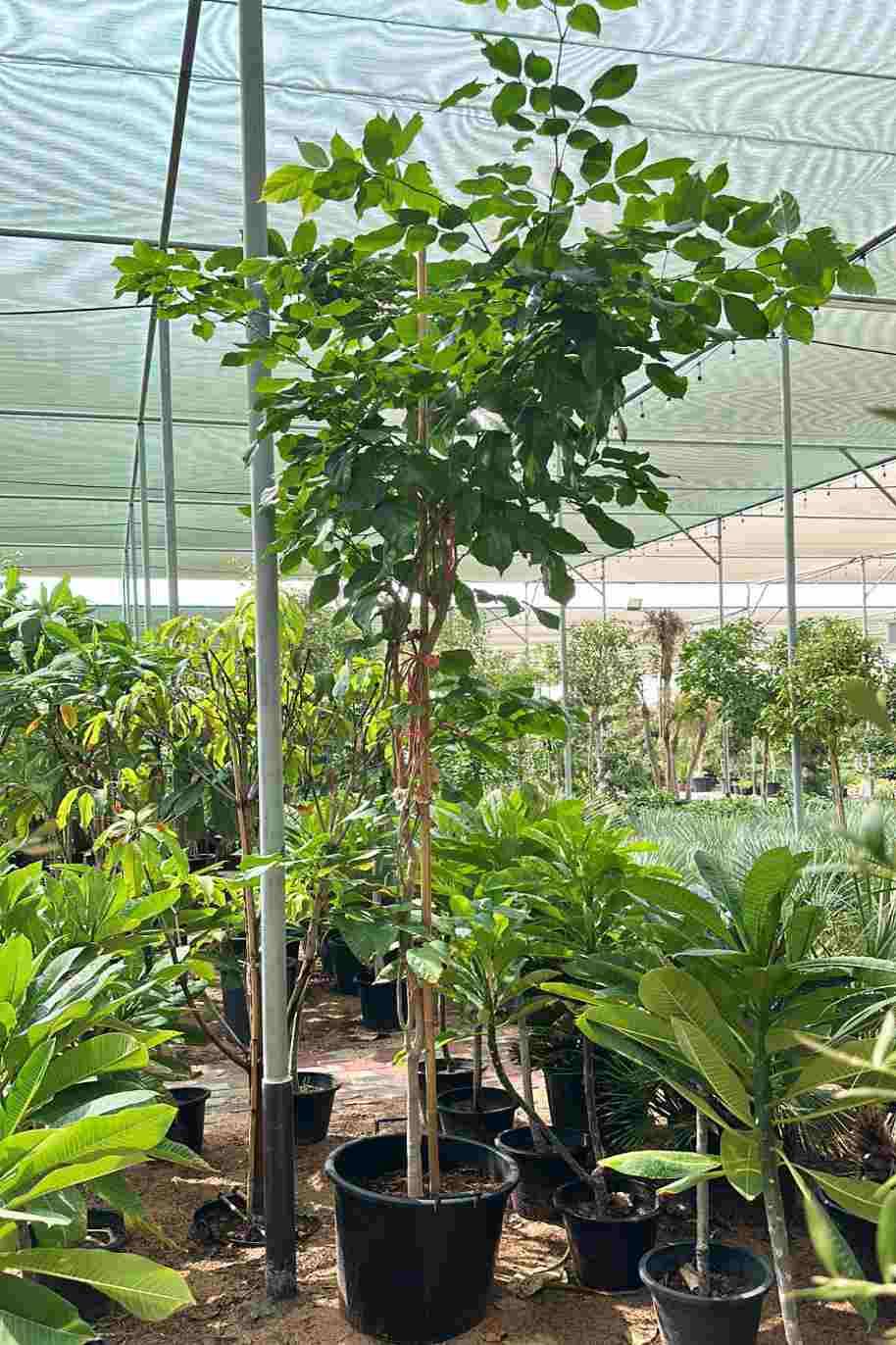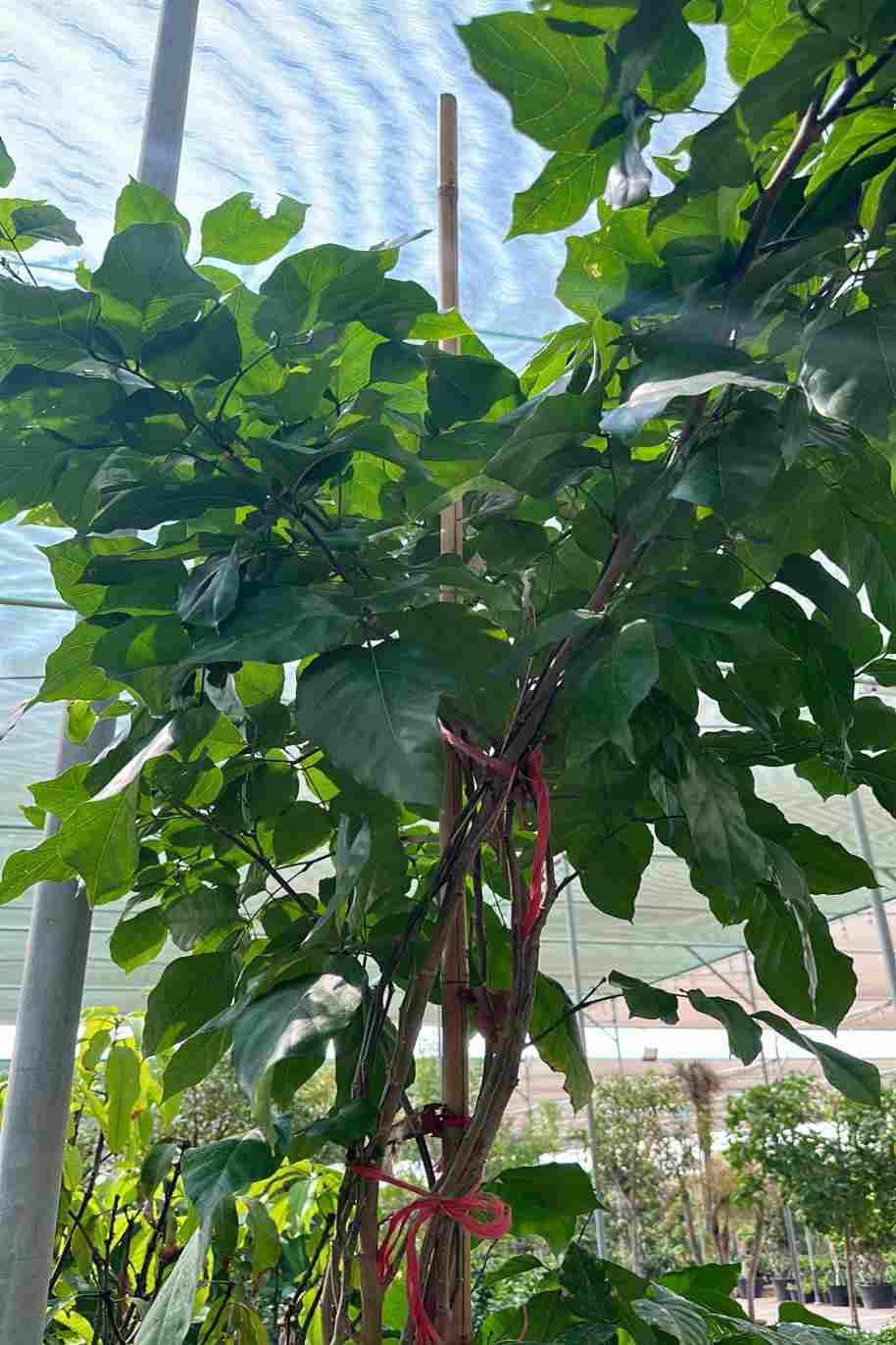Plant Bio
Pongamia glabra, also known as the Pongam Oil Tree or Indian Beech, is a medium to large-sized evergreen tree native to parts of Asia and Australia. It is valued for its multiple uses, including the production of Pongam oil, which has various applications. Here's a description and care guide for the Pongamia glabra tree:
Description:
Leaves: The leaves of the Pongam Oil Tree are pinnate, meaning they have multiple leaflets arranged on opposite sides of the stem. Each leaflet is dark green and has a leathery texture. The leaflets are typically 2 to 5 inches long.
Flowers: The tree produces fragrant, small white to pale purple flowers in clusters. The flowers are attractive to bees and other pollinators.
Fruits: The tree produces pod-like fruits that contain seeds. These seeds are the source of Pongam oil, which is used for various purposes.
Bark: The bark of older trees is grayish-brown and rough in texture.
Care:
Sunlight: Pongamia glabra thrives in full sun to partial shade. It prefers direct sunlight for several hours a day, which helps promote healthy growth and flowering.
Temperature: This tree is adaptable to a range of temperatures and can tolerate both heat and drought once established. It is suitable for tropical to subtropical climates.
Soil: Pongamia glabra prefers well-draining soil. It can tolerate a variety of soil types, including sandy and loamy soils. However, it does not tolerate waterlogged conditions.
Watering: Young trees need regular watering to establish their root systems. Once mature, the tree is fairly drought-tolerant and requires less frequent watering. Water deeply when the soil feels dry.
Fertilization: A mature Pongam Oil Tree doesn't require heavy fertilization. Applying a balanced, slow-release fertilizer in the early spring can promote healthy growth. Avoid excessive fertilization, as it can lead to excessive vegetative growth with reduced flowering.
Pruning: Prune the tree as needed to remove dead, diseased, or damaged branches. Pruning can also help maintain a balanced and attractive shape. Heavy pruning is best done during the dormant period.
Propagation: Pongamia glabra can be propagated from seeds. Collect mature seeds from the pods and plant them in well-draining soil. Germination may take several weeks. Protect young seedlings from extreme conditions.
Pests and Diseases: Pongamia glabra is relatively resistant to pests and diseases. However, keep an eye out for potential issues like aphids or fungal infections. Regular inspection and prompt treatment with appropriate methods can help prevent problems.
Cultural and Traditional Uses: Pongamia oil extracted from the seeds has been used for various purposes, including as a biofuel, lubricant, and in traditional medicine. The oil contains compounds with insecticidal and antifungal properties.
It's important to note that Pongamia glabra is considered invasive in some regions, as it can spread rapidly and outcompete native vegetation. Before planting this tree, check with local authorities to ensure it is not invasive in your area.
When considering planting a Pongamia glabra tree, be sure to research local regulations, its potential impact on the local ecosystem, and its compatibility with your climate and soil conditions.









